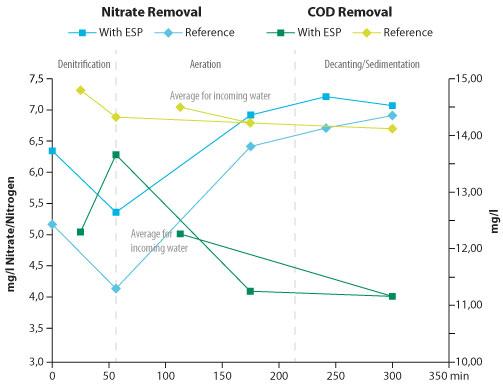 The potential of using organic catalysts to improve nitrification processes is promising due to the oxygen demand required for oxidation of ammonia to nitrate. Ammonia oxidizing bacteria (Nitrosomonas) obtain their energy by oxidizing ammonia nitrogen to nitrite nitrogen and the nitrite oxidizing bacteria (Nitrobacter) by oxidizing nitrite to nitrate nitrogen.
The potential of using organic catalysts to improve nitrification processes is promising due to the oxygen demand required for oxidation of ammonia to nitrate. Ammonia oxidizing bacteria (Nitrosomonas) obtain their energy by oxidizing ammonia nitrogen to nitrite nitrogen and the nitrite oxidizing bacteria (Nitrobacter) by oxidizing nitrite to nitrate nitrogen.
The oxygen demand for complete nitrification is high as nitrifiers are aerobic and adequate dissolved oxygen levels must be maintained to sustain nitrification. Organic Catalysts has been shown to increase dissolved oxygen levels and lowering the transition of energy required for a catalytic reaction to occur.
The company has also conducted test programs on the addition of an organic catalyst prior to sludge dewatering for ammonia reduction.
These studies showed:
- Reduction of ammonia concentrations: in the filtrate was reduced 45% to 66% from its untreated level after a contact time with the organic catalyst of between two and three minutes.
- Ammonia odour reduction: The filter press operator stated that during the trial, the odour from the filter press was significantly reduced (75%).
Case Study – Sequence Batch Reactor, Sweden
- Energy demand decreased from 786 kWh/day to 456 kWh/day (42%)
- The decrease in COD by 21%
- Nitrate removal efficiency improved 50%
- Phosphate removal efficiency improved 25%
